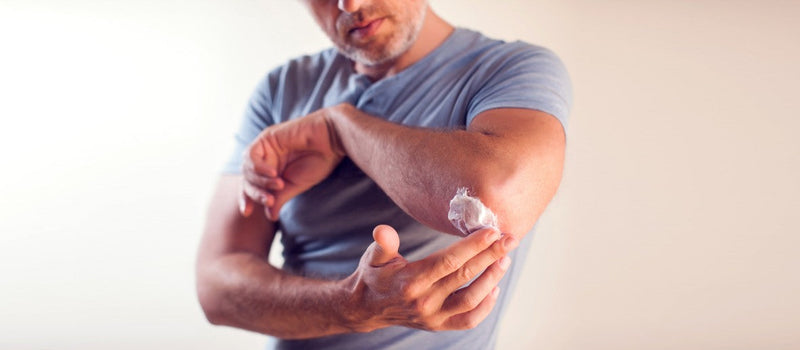

A self-care regimen for diabetes includes taking care of your feet. Diabetic foot complications can result from having too much glucose in your blood for a long time, which can damage nerves and affect blood flow.
The most common diabetes foot complication is neuropathy or nerve damage, which can cause numbness so that you might not feel a foot injury, cut or even a blister that could result in a diabetic foot ulcer. Infected foot ulcers can lead to hospitalization and even leg amputation.
Nerve damage even can cause deformities in your feet and toes, a condition known as Charcot foot. Charcot foot can occur when a small injury or an infection causes severe complications because you cannot feel or notice the symptoms. It can affect the joints in your foot, causing them to collapse, permanently affecting your ability to use your foot.
Diabetes also causes blood vessels to narrow and harden, resulting in poor circulation —another culprit when it comes to foot complications. Poor circulation makes it more difficult for your foot to fight infection and heal.
Importance of diabetes healthy eating
To prevent neuropathy, you want to keep blood sugars in their target range, which starts with healthy eating. The key to diabetes healthy eating, according to the National Institute for Diabetes and Digestive and Kidney Diseases (NIDDK) [1] is to eat a variety of healthy foods from all the food groups in the amount established in a diabetes meal plan specific to your needs. The food groups are vegetables, fruits, grains, protein, and dairy (nonfat or low fat). You will also want to eat foods with heart-healthy fats, which come from:
- oils that are liquid at room temperature, such as canola and olive oil
- nuts and seeds
- heart-healthy fish such as salmon, tuna, and mackerel
- avocado
At the same time, limit fried foods and other foods high in saturated and trans fats, foods high in salt, sweets, and beverages with added sugars.
Diabetes meal planning ensures healthy eating
To ensure healthy eating, consider following a diabetes meal plan. It will include when, what and how much to eat, ensuring that you get the necessary nutrition and at the same time keep blood sugar levels on target. Diabetes meal planning will take into consideration your goals for healthy eating, tastes and lifestyle, as well as any medications you eat.
A good diabetes meal plan will help manage the carbohydrates you eat. Carbohydrates can contribute to an increase in blood sugar. However, a diet plan for a diabetic still should include making sure to get adequate amounts of carbohydrates. That is why it is important to understand that not all carbohydrates are the same, which will help you in making the right food choices. Some foods that contain carbohydrates also include other key nutrients that, if taken in the right amount, can be a benefit to someone with diabetes. Carbohydrates with foods that have protein, fat, or fiber slow down how quickly your blood sugar rises.
Diabetes meal planning also involves watching portion sizes. Read labels and use measuring cups to understand what an appropriate amount consists of. Also eat at regular times. This means eating three meals a day as well as snacks when you need something in between them. And do not wait until you are extremely hungry to eat. When you go for long periods of time between meals, such as 4 to 5 hours, your blood sugar drops which leads to craving refined carbohydrates and/or overeating. [2]
How the plate method aid diabetes meal planning
The plate method is one way to ensure a balanced meal and to not overeat. The plate method balances the amounts of vegetables, lean protein, and carbs in a meal. From the CDC:[3]
Start with a 9-inch dinner plate (about the length of a business envelope):
- Fill half with non-starchy veggies, such as salad, green beans, and broccoli.
- Fill one quarter with lean protein, such as chicken, beans, tofu, or eggs.
- Fill one quarter with carb foods.
Foods higher in carbs include grains, starchy vegetables (such as potatoes and peas), rice, pasta, beans, fruit, and yogurt. A cup of milk also counts as a carb food.
Choose water or a low-calorie drink such as unsweetened iced tea to go with your meal.
Diabetes healthy eating is a key part of maintaining healthy feet. If you have trouble coming up with the right diabetic meal plan, ask your doctor to refer you to a dietician or diabetes care and education specialist to work up a meal plan that you enjoy and that fits your maintenance goals.
[1] “Diabetes Diet, Eating& Physical Activity,” National Institute of Diabetes and Digestive and Kidney Diseases (NDDK), Accessed January 14, 2025. https://www.niddk.nih.gov/health-information/diabetes/overview/diet-eating-physical-activity
[2] Rissetto, Vanessa, M.S., RD, CDN, “How to Manage Foot Health When You Have Diabetes,” EatingWell, February 15, 2022. https://www.eatingwell.com/article/7946161/diabetes-foot-health-tips/
[3] “Diabetes Meal Planning,” CDC, Accessed January 14, 2025. https://www.cdc.gov/diabetes/healthy-eating/diabetes-meal-planning.html








